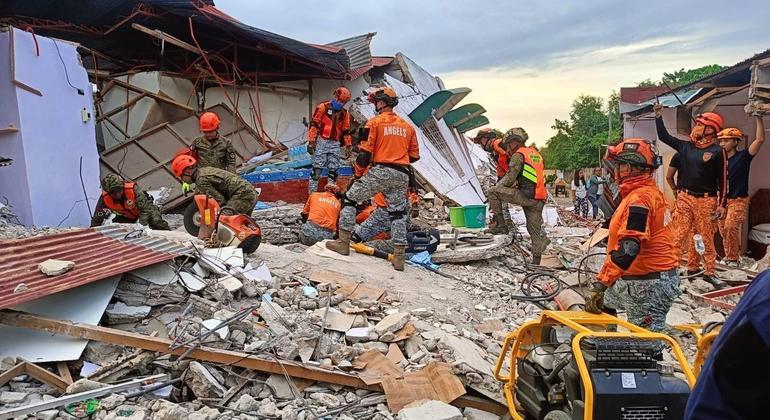The tremor hit the coast of Bogo City at 9:59 p.m. on Tuesday, September 30, the Philippine Institute of Volcanology and Seismology (Phivavolcs) signaling a superficial depth of about 10 kilometers.
Residents said the earthquake had sent people to flee on the street. A tsunami warning was briefly issued and lifted later in the early hours of Wednesday.
Victims and damage
The number of deaths increased to 72 after the end of research and rescue operations on Wednesday, according to the media.
More than 200 people were injured in Bogo, Medellin and San Remigio. More than 111,000 people have been affected, including 20,000 displaced, many of which are camped outside their damaged houses or in open spaces as the aftershocks continue.
The coordination office of the UN, Ochha,, said that the Philippine authorities have declared the state of emergency in four municipalities, unlocking emergency funds for rescue efforts.
The government has also mobilized the intervention teams and set up a joint operations center.
The initial reports indicate generalized damage to houses, churches, schools, public buildings and transport infrastructure. At least two sea ports remain non -operational and several roads are partially blocked, annoying the delivery of aid.
Humanitarian partners also report urgent needs, including shelter, water and access.
They are preparing to distribute hygiene kits and water filtration units, while the United Nations International Organization for Migration (Iom) is on standby to support displaced families.
Pressure hospitals
The disaster has seriously had an impact on health services, the northern Cebu hospitals extended beyond the capacity and the emergency medical teams deployed by the neighboring provinces.
Saia Ma’u Piukala, Regional Director of the World Health Organization (WHO) Office of the Western Pacific, highlighted the impact.
“The number of deaths of the earthquake of September 30 in the province of Cebu has risen considerably.
“Our Philippine campaign office is there to support the government’s health response in any way necessary.”
Continuous replicas
More than 340 aftershocks have been recorded from the earthquake, going to magnitude 4.8. The authorities warn that the tremors could continue in the coming days.
The Philippines are on the so-called “fire ring” of the Pacific and is very subject to earthquakes, volcanic eruptions and typhoons.
“The Philippines and many of our 37 other countries and regions Vulnerable to earthquakes and other disasters due to geography and, more and more, the climate crisis“Said regional director Piukala, urging continuous investment in preparation.
United Nations Solidarity
In a statementThe team of United Nations countries in the Philippines expressed “deeper sympathies and unwavering solidarity” with those affected, renting the first stakeholders, medical staff and volunteers.
Originally published at Almouwatin.com








